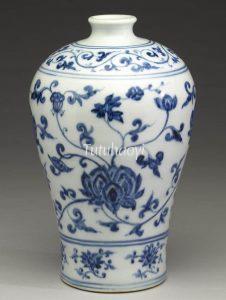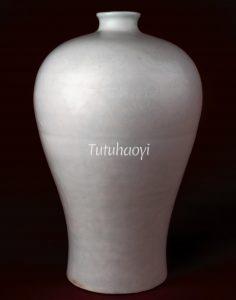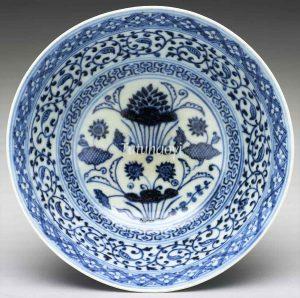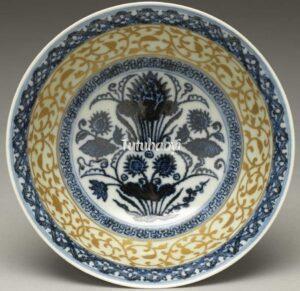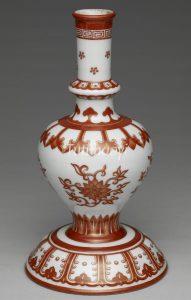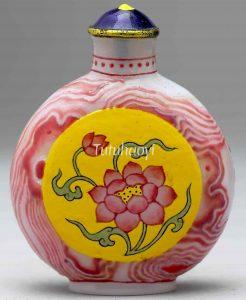Lotus (Lian Hua)
莲花
© Tutuhaoyi.com owns the copyright of the description content for the images attached. Quoting all or part of the description content on this page is permitted ONLY IF ‘Tutuhaoyi.com’ is clearly acknowledged anywhere your quote is produced unless stated otherwise. (本页描述内容版权归Tutuhaoyi.com所有,转发或引用需注明 “Tutuhaoyi.com”, 侵权必究, 已注开源信息的条目除外。)
Lian Hua (lotus) is also called ‘he hua (荷花)’. It is different from ‘shui lian (睡莲 water lily)’ which is another kind of water plant.
The first character of ‘lian hua’ has been used to pun for ‘lian’ (廉) which means being fair and uncorrupted in one’s official position.
Twin-headed lotus flower (‘bing di lian 并蒂莲’) refers ‘a loving relationship’. See ‘并蒂双贵’ (May you couple live a harmonious life and enjoy prestige).
Related motif:
lotus bouquet 一把莲
Related Pun Picture:
You are an honest and uncorrupted official in your entire career 一路清廉
Fig 1: porcelain meiping vase, Yongle period (1403–24), Ming dynasty, courtesy of the National Palace Museum, Taipei
Fig 2: porcelain meiping vase, Yongle period (1403–24), Ming dynasty, courtesy of the Trustees of the British Museum
Fig 3: porcelain bowl, Yongle period (1403–24), Ming dynasty, courtesy of the National Palace Museum, Taipei
Fig 4: porcelain bowl, Yongle period (1403–24), Ming dynasty, courtesy of the National Palace Museum, Taipei
Fig 5: lidded porcelain vase with underglaze blue decoration, Yongle period (1403–24), Ming dynasty, courtesy of the National Palace Museum, Taipei
Fig 6: porcelain bottle, Qing dynasty (1644–1911), courtesy of the National Palace Museum, Taipei
Fig 7: glass snuff-bottle with falangcai enamelled decoration, Qianlong period (1736–95), Qing dynasty, courtesy of the National Palace Museum, Taipei
